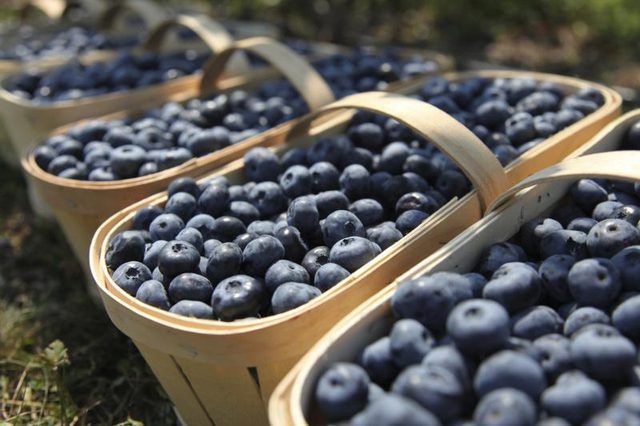Bulbs
Flower Basics
Flower Beds & Specialty Gardens
Flower Garden
Garden Furniture
Garden Gnomes
Garden Seeds
Garden Sheds
Garden Statues
Garden Tools & Supplies
Gardening Basics
Green & Organic
Groundcovers & Vines
Growing Annuals
Growing Basil
Growing Beans
Growing Berries
Growing Blueberries
Growing Cactus
Growing Corn
Growing Cotton
Growing Edibles
Growing Flowers
Growing Garlic
Growing Grapes
Growing Grass
Growing Herbs
Growing Jasmine
Growing Mint
Growing Mushrooms
Orchids
Growing Peanuts
Growing Perennials
Growing Plants
Growing Rosemary
Growing Roses
Growing Strawberries
Growing Sunflowers
Growing Thyme
Growing Tomatoes
Growing Tulips
Growing Vegetables
Herb Basics
Herb Garden
Indoor Growing
Landscaping Basics
Landscaping Patios
Landscaping Plants
Landscaping Shrubs
Landscaping Trees
Landscaping Walks & Pathways
Lawn Basics
Lawn Maintenance
Lawn Mowers
Lawn Ornaments
Lawn Planting
Lawn Tools
Outdoor Growing
Overall Landscape Planning
Pests, Weeds & Problems
Plant Basics
Rock Garden
Rose Garden
Shrubs
Soil
Specialty Gardens
Trees
Vegetable Garden
Yard Maintenance
When Is Blueberry-Picking Season?
When Is Blueberry-Picking Season?. Before the early 1900s when blueberry breeding programs began, blueberry (Vaccinium spp.) harvest was from wild plants in limited geographical regions of the United States and for narrow windows of time. From the 1930s onward, development of blueberry cultivars and hybrids allowed people to grow blueberries...

Before the early 1900s when blueberry breeding programs began, blueberry (Vaccinium spp.) harvest was from wild plants in limited geographical regions of the United States and for narrow windows of time. From the 1930s onward, development of blueberry cultivars and hybrids allowed people to grow blueberries throughout the country, eventually with harvests all during the summer possible because of varieties with different ripening times. Blueberry is native to North America, and a number of species are involved in the array of blueberries available for cultivation.
Types of Blueberries
The major kinds of cultivated blueberries have ripening times correlated with the climate zone they came from. The most northern species ripen earlier than southern species, although the development of season-extending cultivars in each category blurs the lines. Most cold tolerant is lowbush (Vaccinium angustifolium), which grows in the northeastern states in U.S. Department of Agriculture plant hardiness zones 3 through 6. Northern highbush (Vaccinium corymbosum), native to the eastern United States, is hardy in USDA zones 3 through 8, with variation depending on the cultivar. Rabbiteye (Vaccinium virgatum) originates in the South and can reach 30 feet high in USDA zones 7 through 9. Hybrid southern highbush blueberries (Vaccinium darrowi x V. virgatum), which grow in USDA zones 7 through 10, combine traits of northern highbush and southern species of blueberries.
Northern and Eastern Growing Regions
With cold winters and a short growing season, the Northeast is home to lowbush and northern highbush blueberries. In Maine, harvest of northern highbush blueberries begins in mid- to late July, with biggest yields in early to mid-August. Lowbush blueberries are still mostly harvested from the wild plants in Maine during August. New Jersey has a long blueberry harvest time beginning in mid-June and extending through September.
Southeastern Regions
With milder winters and a longer growing season, rabbiteye and southern highbush blueberries grow well in the Southeast. In North Carolina, southern highbush cultivars that have different ripening dates can be harvested from mid-May to July. Rabbiteye cultivars begin harvest in mid-June and extend into late August. Georgia's blueberry harvest goes from the end of June to mid-July.
Southern States
Rabbiteye and southern highbush cultivars predominate in southern states. In Mississippi, early varieties of rabbiteye ripen from May to early June, followed by later-ripening cultivars of rabbiteye and southern highbush, with the harvest season ending in mid-July. This time line is repeated in Alabama, Arkansas, Louisiana and Texas. Florida has a blueberry harvest season from mid-April through May.
Western States
A wide variety of growing conditions exist in western states, from mild winters in southern California to the colder Pacific Northwest. In California, blueberry season begins with southern highbush cultivars in early May and extends into late July with rabbiteye cultivars. Cooler climates of Oregon allow growing northern highbush as well as southern highbush blueberries, with a long harvest season as a result. Blueberries begin ripening in mid-June, with harvest extending into mid-September. Although rabbiteye cultivars can grow in the Pacific Northwest, they don't ripen until late summer and fall.